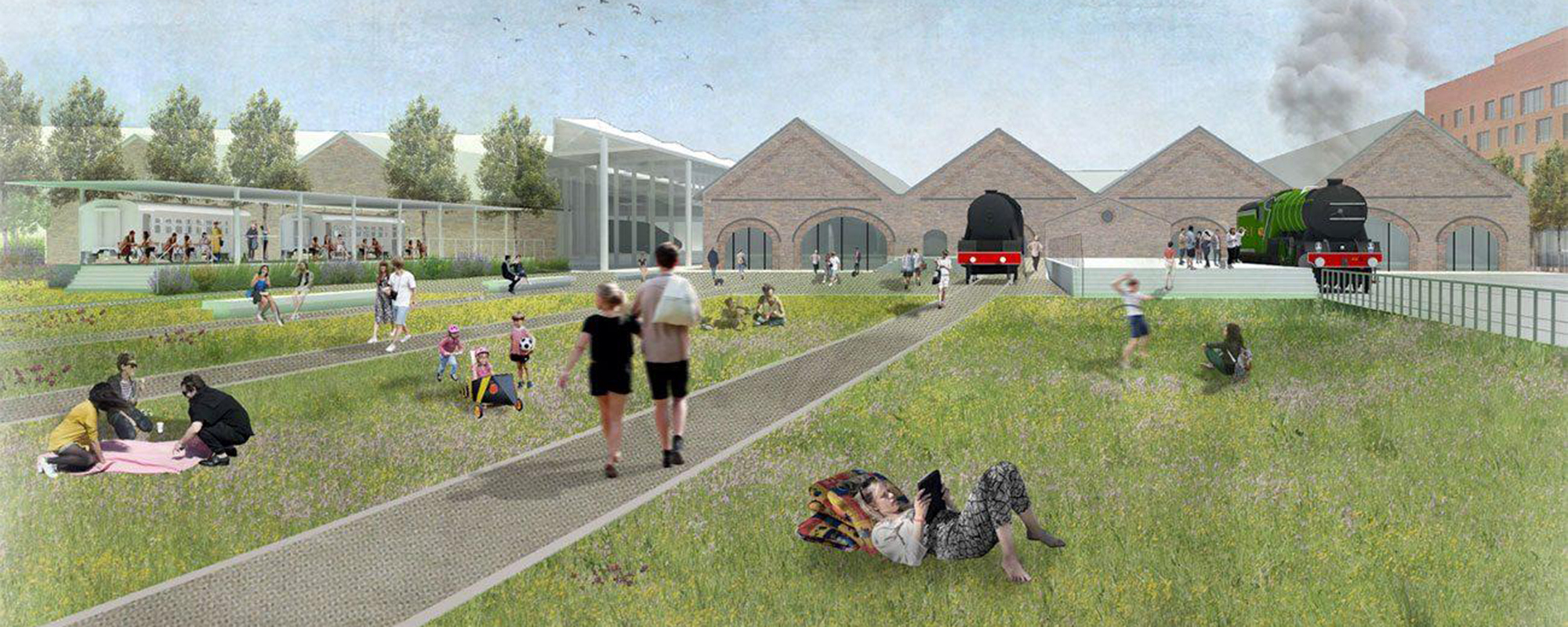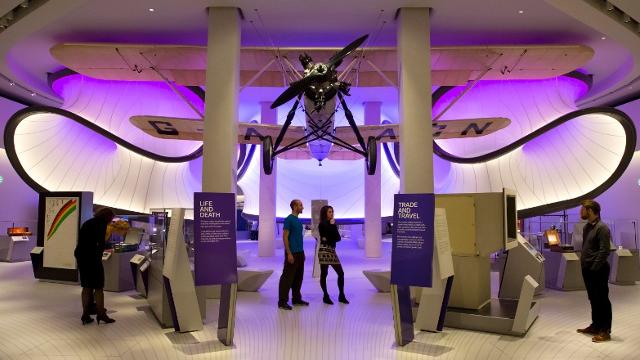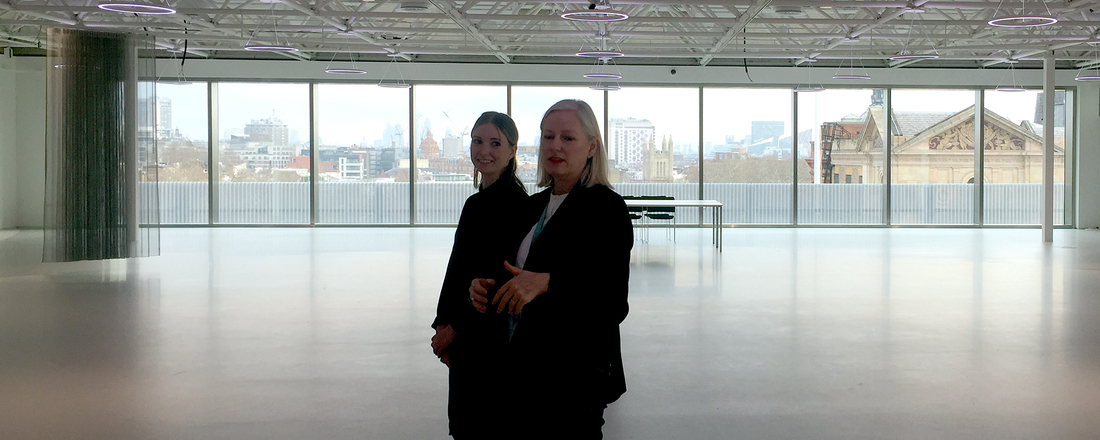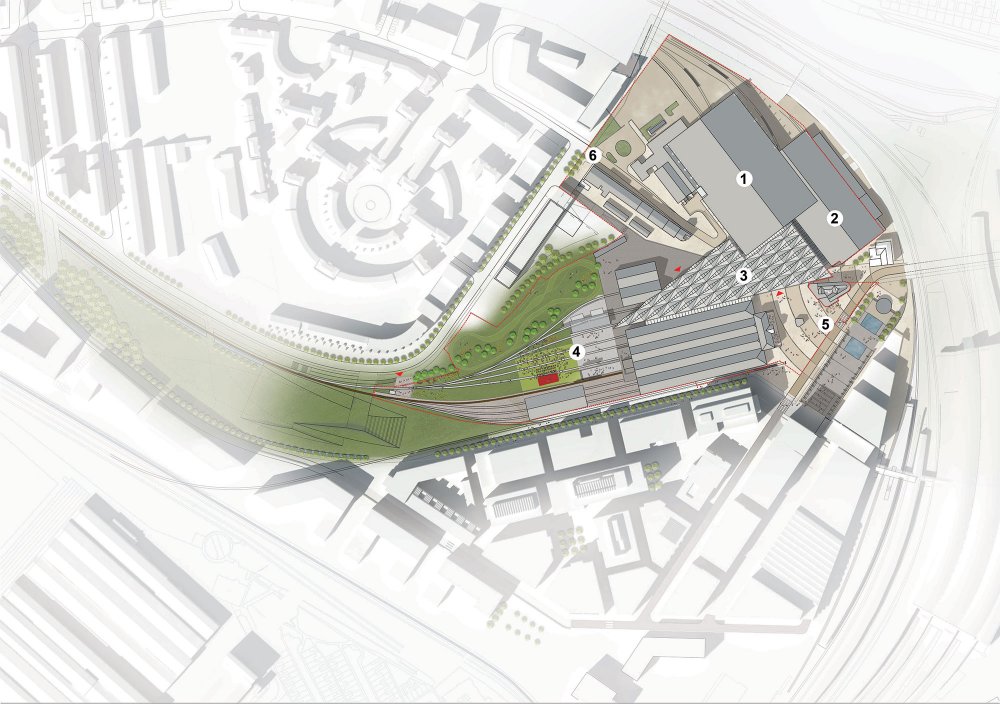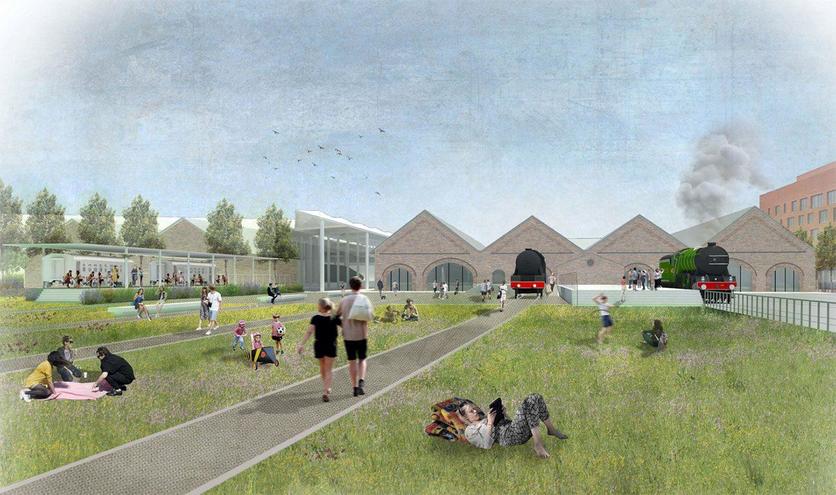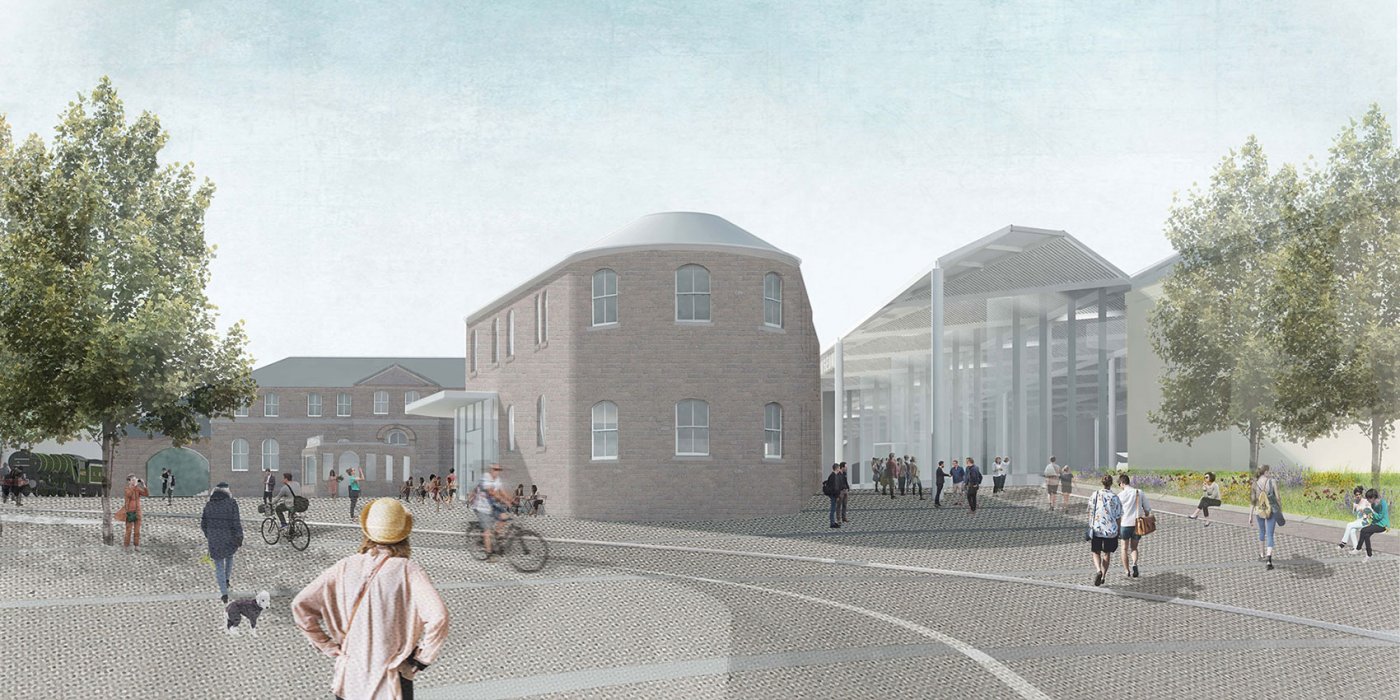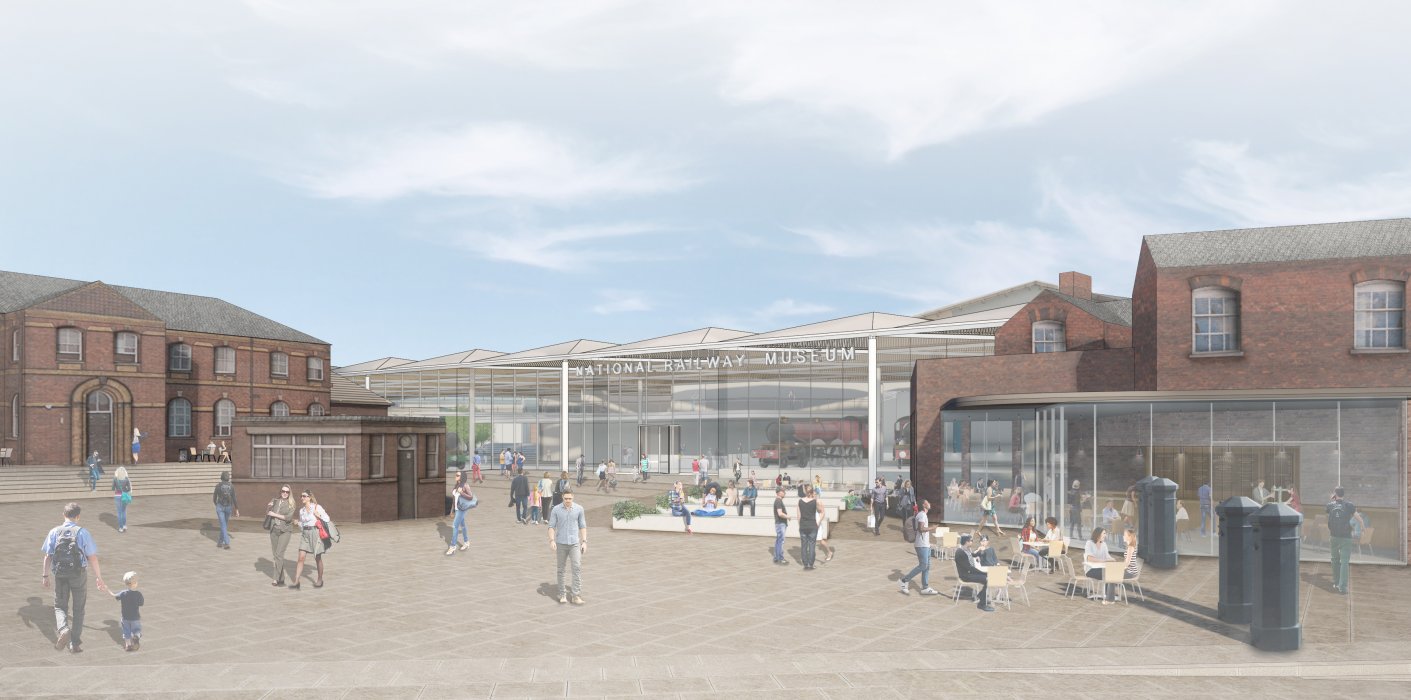Get updates from The Developer straight to your inbox Yes, please!
“We’re opening up in a way that isn’t natural for a museum”
Karen Livingstone, director of masterplan and estate for the Science Museum Group, on York 2025, historic Manchester and the trouble with London’s Exhibition Road

From Dundee to Doha, museums are often deployed as catalysts for change. But for Karen Livingstone, director of masterplan and estate for the Science Museum Group, the five museums under her remit across the UK have a much wider role to play.
“That single cultural offer can change a place; the V&A Dundee is a tremendous example of that,” says Livingstone.
“But for us, it’s really about inspiring futures, engaging with people, and making our museums into something that captures the spirit of why STEM subjects and careers are important.”
Best known for its Exhibition Road location in London, the Science Museum Group’s estate actually includes seven major sites across the UK: the National Railway Museum in York; Locomotion in County Durham; the National Science and Media Museum in Bradford; the Science and Industry Museum in Manchester; and two large storage sites in west London and Swindon.
“Our estate is probably one of the largest and most complex museum estates in the world,” Livingstone adds.
“We have seven sites, all with very different characters and in different geographical locations and cities, and therefore have different contexts, audiences, missions and places that we need to engage with in different ways.”
Livingstone says that’s why she takes a place-centred, location-specific approach to the development of the estate and each museum.
She admits this can be a challenge: “There are some things that need to be consistent across the group – because of the practicalities of maintaining an estate, you have to have things behind the scenes that have to run smoothly and consistently.”
But she says a tailored approach to the estate is critical to its success: “The character of each city is different. The politics are different. The way people behave and dress are different. For us, being successful in the cities is about understanding the place and the people.”
“We have these extraordinary national collections that date back hundreds of years. We have the first train, the first computer… but it’s explaining why are those historical collections are important and telling those stories.”
“The character of each city is different. The politics are different. The way people behave and dress are different. For us, being successful in the cities is about understanding the place and the people”
“We also try and help people see themselves in that story, which is particularly helpful for young people and for women.”
Livingstone previously worked as head of projects across the road at the Victoria and Albert Museum, before crossing Exhibition Road to the Science Museum in a brand new role to develop its estate.
“When I was brought in to do this job seven years ago, it was to combine what the science museums already do with architecture and the quality of the experience in the place that you’re in.
“The joy of it is trying to find in these places what’s special and unique and what our contribution to that can be”
“Many of our buildings are beautiful, historic, listed structures that tell stories about innovation enterprise, but actually they’re not integrated with their cities.
“We’re opening ourselves up in a way that isn’t natural to a museum. It’s more of a campus approach,” says Livingstone.
“For example, in Manchester, there is the earliest surviving passenger railway station in the world, but it’s pretty fenced off – it’s a closed site. Our plan is to work with the city and the developers to make our site permeable, throwing open the gates and creating links through.”
“The Factory, the multimillion pound arts venue, is right in our doorstep,” adds Livingstone. “All around that is a development called St John’s Quarter. So we’ll have food and beverage offers, and in the future if you live in Castlefield, you can walk through our site and pick up a coffee on the way.
“Manchester is actually surprisingly short of historic districts,” adds Livingstone. “The joy of it is trying to find in these places what’s special and unique and what our contribution to that can be.”
High on Livingstone’s list this year, however, is the York museum and its ambitious redevelopment, which sits at the heart of the largest brownfield regeneration site in the country, the York 2025 vision.
“We are a very integrated partner in the wider city masterplan to make a place. This transformation will really change the visitor experience, and change the way our visitors engage with science, technology, engineering and maths.
“My big job for this year is running the competition to find the architect who is going to work with us on that building – I’m very excited.”
Located just outside York’s historic city walls, Livingstone sees the opportunity to do something contemporary and transformative, and is keen to bring world-class architecture to the city.
Although the site is bigger, it has something in common with King’s Cross – it’s located on disused railway land currently inaccessible to the city. “It’s pretty miserable, really,” Livingstone says.
“It’s not going to be a Bilbao iconic thing, we have a budget to work to”
“In York, we have a museum that’s by any standard pretty run down. The visitor experience doesn’t meet what I would expect, yet it’s at the heart of the biggest brownfield site in the country and has a footfall of already 750,000.
“For visitors, their experience starts before they get here: online, at the tube station, as they walk up the road – all that matters to us,” adds Livingstone. “We want to raise the quality, to create better buildings, better placemaking, and do that in a very integrated way in the city.
“A huge swagger of our site is going to become a new city park with a children’s playground. At the moment, this is all inaccessible railway track.”
Livingstone is working with Homes England and Allies and Morrison to write the design guidelines for the masterplan: “When we started working on York five or six years ago, Roger Madelin was very helpful with his advice. He told us to really focus on design quality, so although I can’t control the commercial elements, I can influence the quality of the architecture and public realm in particular.
“In York, there’s going to be a big square – bigger that Granary Square – that’s going to sit between our museum and York Station. It really matters to us that that it’s done to that considerable level of quality and care.”
While the museum plans will be unashamedly contemporary, Livingstone says it will also reference the heritage of the city. “Allies and Morrison have been very careful in thinking about heritage and the use of materials. There’s no pastiche going on, but finishes that are appropriate to the city.”
Gustafson Porter is the landscape architect.
While the museum will be designed to attract tourism as well as serve the city, Livingstone stresses that “it’s not going to be a Bilbao iconic thing, we have a budget to work to.”
But it’s not going to be a shrinking violet, either: “I said [to the council] how do you feel about bringing that [Bilbao] level of quality to York? And they said they’re 100% behind it.”
Livingstone says they need to be ambitious in York: “Because we can, because we’re not in the city walls. And we also have an obligation to do it, because that building is going to be there for a hundred-odd-plus years. We need to create the best environment with our visitors and mission in mind.
“If we do it well, it will be a huge benefit to the city and the people that visit.
“We have to be outward facing and be engaged – not just sitting behind our museum walls thinking about what we do on our own.”
“If we have to have those barriers [on Exhibition Road], then let’s design them properly – not just plonk concrete blocks there, which is what they’ve done”
Finally, I ask Livingstone about Exhibition Road, which appears to have abandoned its shared surface strategy, with concrete bollards, bike racks and benches now attempting to separate pedestrians and traffic. What’s her opinion on the success of the scheme and what needs to happen next?
“Let’s go back to the drawing board and look at the whole landscape of exhibition road. Let’s integrate things better and remove the things that don’t work,” Livingstone says.
“The quarter is a constantly changing landscape. More visitors come to South Kensington in a year than visit Venice. How does that affect the tube station? They’re about to put in step-free access. The environment around us is very difficult.”
“Now [Exhibition Road] is not quite as pure as the original concept, but that has a lot to do with how people live here and work here, and things evolve and change. It’s difficult for that vision not to be eroded as it’s quite problematic. We regularly meet and think of how to work with the council and each other.”
“One of the current battles – or design opportunity – is the terrorist threat. If we have to have those barriers, then let’s design them properly – not just plonk concrete blocks there, which is what they’ve done.”
“There’s nothing more important than people’s safety, but nobody is taking it to the next step –
let’s design and integrate it properly.”
Listen to the full interview in the podcast below by clicking on the link and sign up to The Developer Weekly to be updated when new episodes go online.
Sign up to our newsletter
Get updates from The Developer straight to your inbox
Thanks to our organisation members
© Festival of Place - Tweak Ltd., 124 City Road, London, EC1V 2NX. Tel: 020 3326 7238
© Festival of Place - Tweak Ltd., 124 City Road, London, EC1V 2NX. Tel: 020 3326 7238
